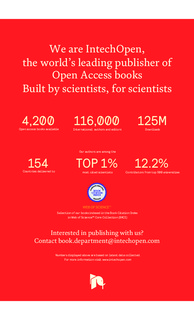| dc.contributor.author | Heravi, Amid | |
| dc.contributor.author | Ahmad, Desa | |
| dc.contributor.author | Hameed, Ibrahim A. | |
| dc.contributor.author | Shamshiri, Redmond Ramin | |
| dc.contributor.author | Balasundram, Siva K. | |
| dc.contributor.author | Yamin, Muhammad | |
| dc.date.accessioned | 2019-07-01T09:49:25Z | |
| dc.date.available | 2019-07-01T09:49:25Z | |
| dc.date.created | 2019-01-30T09:21:22Z | |
| dc.date.issued | 2019 | |
| dc.identifier.isbn | 978-1-78984-934-9 | |
| dc.identifier.uri | http://hdl.handle.net/11250/2602971 | |
| dc.description.abstract | A prototype robot that moves on a monorail along the greenhouse for weed elimination between cucumber plants was designed and developed. The robot benefits from three arrays of ultrasonic sensors for weed detection and a PIC18 F4550-E/P microcontroller board for processing. The feedback from the sensors activates a robotic arm, which moves inside the rows of the cucumber plants for cutting the weeds using rotating blades. Several experiments were carried out inside a greenhouse to find the best combination of arm motor (AM) speed, blade rotation (BR) speed, and blade design. We assigned three BR speeds of 3500, 2500, and 1500 rpm, and two AM speed of 10 and 30 rpm to three blade designs of S-shape, triangular shape, and circular shape. Results indicated that different types of blades, different BR speed, and different AM speed had significant effects (P < 0.05) on the percentage of weeds cut (PWC); however, no significant interaction effects were observed. The comparison between the interaction effect of the factors (three blade designs, three BR speeds, and two AM speeds) showed that maximum mean PWC was equal to 78.2% with standard deviation of 3.9% and was achieved with the S-shape blade when the BR speed was 3500 rpm, and the AM speed was 10 rpm. Using this setting, the maximum PWC that the robot achieved in a random experiment was 95%. The lowest mean PWC was observed with the triangular-shaped blade (mean of 50.39% and SD = 1.86), which resulted from BR speed of 1500 rpm and AM speed of 30 rpm. This study can contribute to the commercialization of a reliable and affordable robot for automated weed control in greenhouse cultivation of cucumber. | nb_NO |
| dc.language.iso | eng | nb_NO |
| dc.publisher | IntechOpen | nb_NO |
| dc.relation.ispartof | Agricultural Robots Fundamentals and Applications | |
| dc.rights | Navngivelse 4.0 Internasjonal | * |
| dc.rights.uri | http://creativecommons.org/licenses/by/4.0/deed.no | * |
| dc.title | Development of a Field Robot Platform for Mechanical Weed Control in Greenhouse Cultivation of Cucumber | nb_NO |
| dc.type | Chapter | nb_NO |
| dc.description.version | publishedVersion | nb_NO |
| dc.identifier.doi | 10.5772/intechopen.80935 | |
| dc.identifier.cristin | 1668266 | |
| dc.description.localcode | © 2018 The Author(s). Licensee IntechOpen. This chapter is distributed under the terms of the Creative Commons Attribution License (http://creativecommons.org/licenses/by/3.0), which permits unrestricted use, distribution, and reproduction in any medium, provided the original work is properly cited | nb_NO |
| cristin.unitcode | 194,63,55,0 | |
| cristin.unitname | Institutt for IKT og realfag | |
| cristin.ispublished | true | |
| cristin.fulltext | original | |

